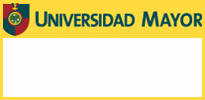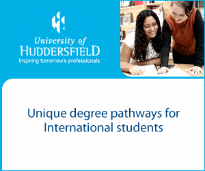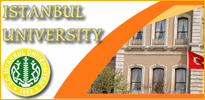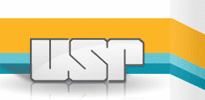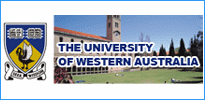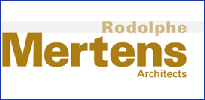Turkey: Education
Turkey Education Profile 2012
The extensive and disciplined education system of Turkey underwent serious reforms in the last decade, like the compulsory eight-year education, improvement of the overall quality of the Turkish education system, as well as the increase in the number of schools and related establishments.
Many private and foundation schools, in addition to public schools, offer education services; moreover international schools, where only foreign nationals can attend, are present throughout the country. While schools providing education in European languages such as English, German, French and Italian are available, there are other institutions where languages such as Russian, Japanese and Chinese are taught, as well.
After the change from the Ottoman to the Turkish Republic many reforms in education were made. As in Ottomans the Ottoman language was difficult, the alphabet was the Arabic one which is very difficult to learn, the literacy ratio was very low and the religion education was the major subject many radical changes has been made. Some important ones were secularization and change of alphabet.
Education has been made a top priority of national development. It has the largest budget of any ministry with an allocation of over 22% of the national budget.
The aim of the Turkish educational system is to nurture productive, happy individuals with broad views on world affairs who will unite in national consciousness and thinking to form an inseparable state, and will contribute to the prosperity of society through their skills. This is thought to be instrumental in making the Turkish nation a creative and distinguished member of the modern world.
Some Numbers
- Education :Compulsory for 8 years (recently decreed)
- Literacy Rate :Total 82 %, Male 89%, Female 69 %
Nursery Schools
Primary Schools
Primary School which is compulsory for 8 years, start at the age of 7 generally but, depending on the physical development of children, it can also be 6.
The national attendance at primary schools is about 96%. In some rural areas parents cannot physically manage to get their children to school as they live far from towns on mountains.
A special feature of primary schools is that one teacher takes care of all the students in one class, from the first grade and continues with those children for eight years until they finish their compulsory education.
The school age population of Turkey is very large and often school buildings and teachers are insufficient to cope. This results in two sessions of school, one in the morning and one in the afternoon. This helps to explain why so many children are seen in the streets during weekdays.
The average number of students in each classroom is 20 to 40, but in some rural areas, where there are not enough teachers, even more students have to fit into the same classroom.
All over the country, in each classroom above the blackboard, a portrait of Ataturk is hung. On one side you will see his speech to the Turkish Youth and on the other, the National Anthem. As Atatürk is very important for the Turkish people the principles of him are told to children from that age on.
There are no fees for public education until college or university. Students attend school in uniforms which are usually blue or very occasionally black for public schools. The uniforms of private schools are generally more colorful and with ornament. Parents have to buy uniforms, pens, pencils and notebooks.
At the beginning of the week on Monday mornings and at the end of the week during Friday afternoons, flag ceremonies are held with all the teachers and students present in the courtyard or playground of each school.
Each morning, primary school students pledge in chorus to be honest and studious, to protect the young and respect the old, to love their country more than themselves.
The general studies are about Turkish, Foreign Language, Chemistry, Mathematics, Physics, Literature, Religion, Geography, History, etc
After they finish Primary school they take an examination which is effecting the Secondary and Lyceum education.
High Schools (Lyceum)
This consists of High School (Lyceum), which normally takes 3 years. In these schools, the system of one teacher for each class changes to a specialist teacher for each subject. Students can choose one foreign language from English, French or German. Religious Education lessons, depending on the present government’s policy, is often optional, and is actually a comparative study of religions rather than only of Islam
The aims of these schools are to secure a level of general knowledge, develop an awareness of individual and community problems and to contribute to the economic, social and cultural growth of the country as well as preparing students for higher education.
Universities
Anatolian, Science, Fine Arts, Vocational, Technical, Islamic Theological and Private High Schools are different from the general High Schools, but are still a part of the Secondary Education system.
The Anatolian, Science and Private High Schools are the best and consequently most popular. In these schools there is an extra year (prep class) at the beginning to teach one foreign language and in the following years, all science lessons are taught in that foreign language.
Students in High Schools must wear uniforms. The education at this level is free of charge except at the private schools where an average fee is about 4,000 US Dollars per year.
Students show respect for their teachers by addressing them "sir" or "teacher", or by standing up as a class when a teacher enters the classroom.
This consists of universities of two and four years, schools of further education which are all affiliated to an autonomous Higher Education Council.
There are a total number of 60 universities excluding the private universities. Students are admitted to universities through a examination held once a year. In order to obtain a good future, students want to study in good departments at good universities. This is why they start studying for the entrance exams as much as two years in advance, generally taking private courses as well. The students need to get at least 105 points to have a chance. After the results students need to make their selections and after, the YOK (High Education Council) place the students starting from the highest points got. As there are more applications than quotas in Universities not everyone could get placed. Generally speaking 1/3 of the students could continue to the university. The others, in case they can afford it continue to the private universities, start working, wait one more year or attend the military service (for man) .
Unlike the earlier educational levels, students have to pay a fee of approximately 100-350 US Dollars per year at public higher education facilities.
After four years of study they may also continue to do masters for one or two years. This is also with an examination and costs a little more.















